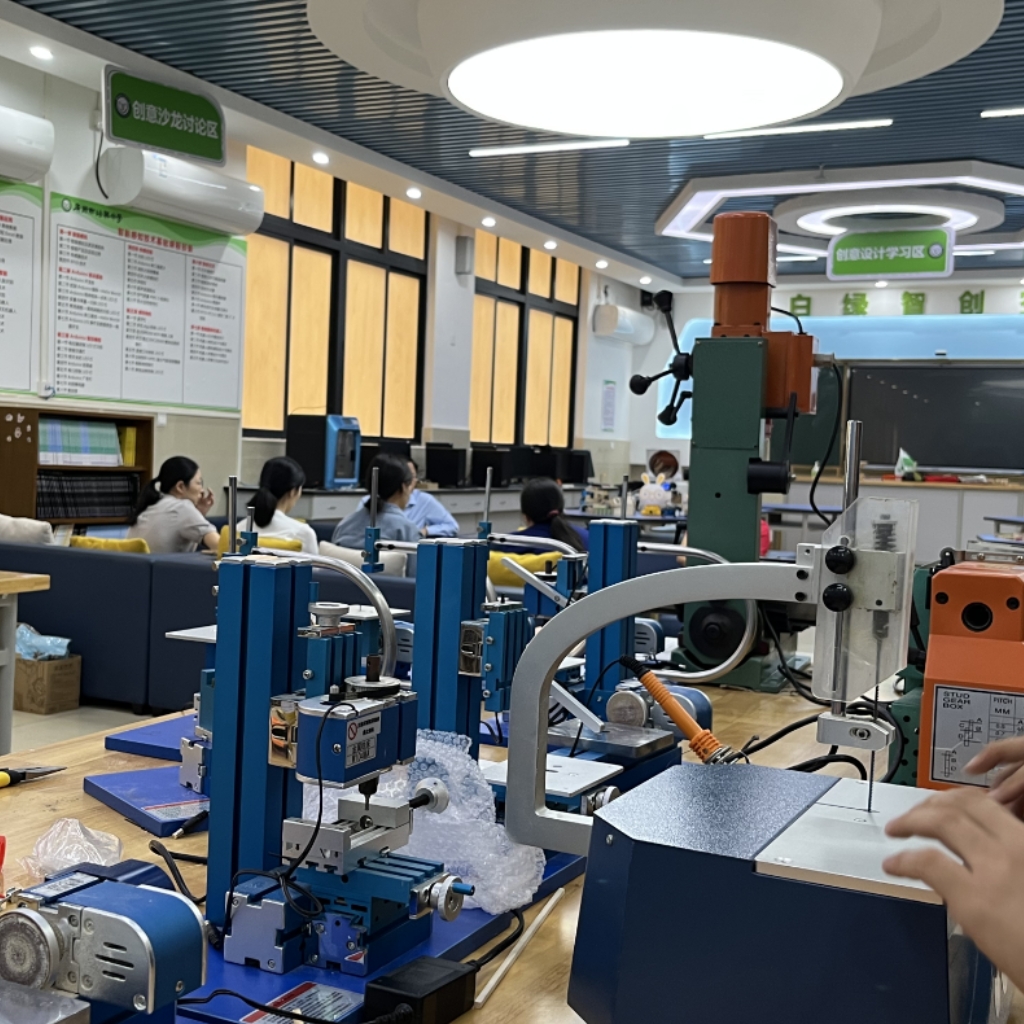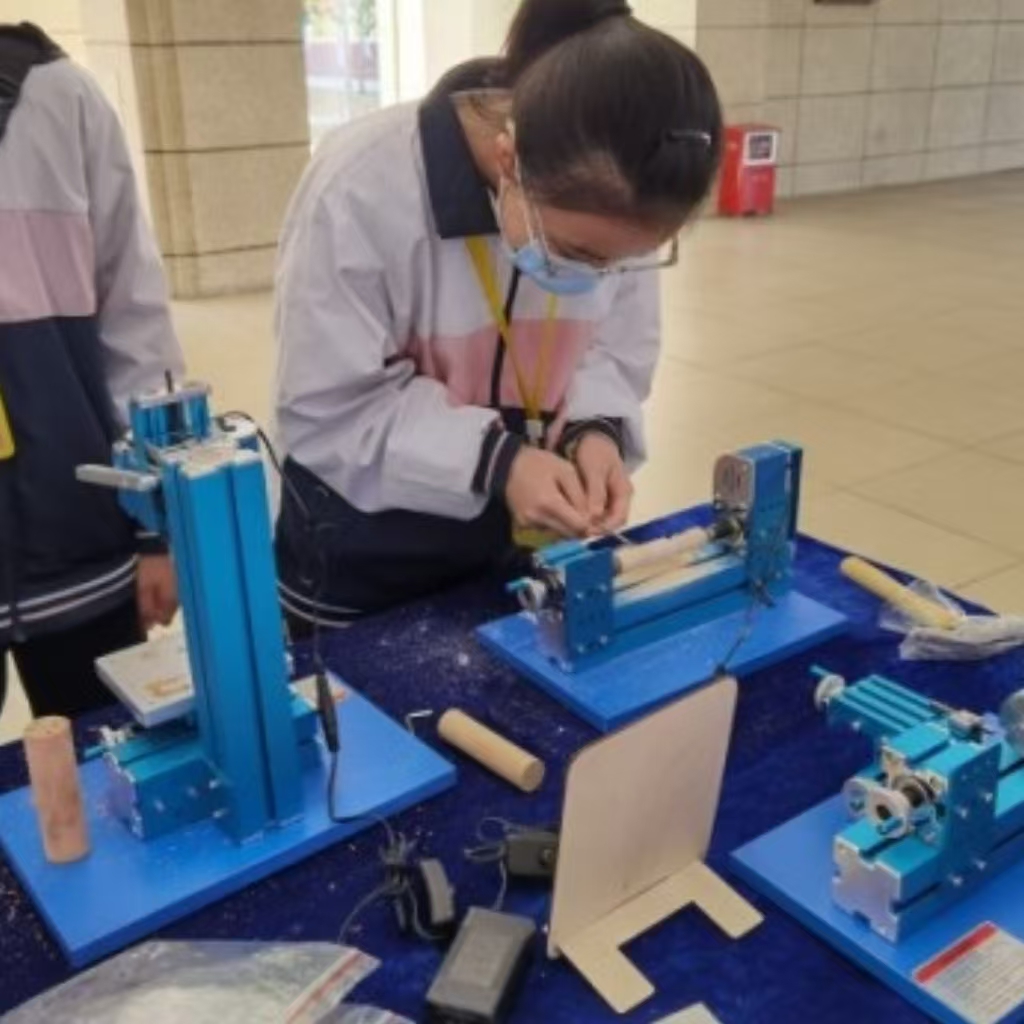Blog
Xendoll has 22 years of experience in the production of small machine tools. We will help you choose the suitable machine and share our experience in CNC machining with you.
 Jul 29, 2025
Jul 29, 2025

 846
846
Choosing the right lathe is fundamental to success in turning, whether you're a hobbyist crafting pens, an educator teaching machining principles, or a professional creating precision parts. While both wood lathes and metal lathes share the core function of rotating a workpiece against a cutting tool to shape it, their differences are profound. Understanding these distinctions ensures you select the right tool for your material and desired outcome.

I. Fundamental Differences: Purpose, Power, and Precision
At their heart, wood lathes and metal lathes are designed for vastly different materials and levels of precision:
Core Function & Material Suitability:
Wood Lathe: Primarily designed for turning relatively soft materials like wood, plastics, and occasionally soft non-ferrous metals (e.g., brass, aluminum) at lower speeds and with less emphasis on ultra-fine tolerances. Focus is on shaping, carving, sanding, and finishing.
Metal Lathe: Engineered to cut significantly harder materials like steel, iron, stainless steel, and tough alloys. They achieve precise dimensional accuracy, fine surface finishes, and strict tolerances measured in thousandths of an inch or hundredths of a millimeter.
Construction & Rigidity:
Wood Lathe: Typically features a lighter-duty frame (often cast iron or heavy steel tube), simpler bearings, and a less complex headstock. Designed to handle the lower cutting forces involved in woodworking. Vibration control is important but less critical than for metal.
Metal Lathe: Boasts a massively heavy, rigid cast iron or fabricated steel frame and bed. Uses high-precision, heavy-duty bearings (e.g., tapered roller bearings) to withstand immense cutting forces and prevent deflection. This rigidity is non-negotiable for accurate metal cutting.
Power & Drive Systems:
Wood Lathe: Generally uses lower-horsepower AC motors (often 1/2 HP to 2 HP for hobby/mini sizes). Speed changes are usually achieved via stepped pulleys or electronic variable speed control (EVS) within a moderate range (e.g., 200 - 3000 RPM). High torque at lower speeds is less critical.
Metal Lathe: Requires significantly more powerful motors (often 1 HP to 5+ HP even for bench-top models) to drive cutting tools through tough metal. Crucially, they provide high torque at very low speeds (often down to 50-100 RPM or lower) for heavy cuts and large diameters. Speed control is more complex, often involving gearboxes combined with pulleys or EVS for a wide range (e.g., 50 - 2500 RPM).
II. Operational Differences: Tooling, Control, and Complexity
How you interact with and use these lathes differs significantly:
Tool Holding & Cutting Action:
Wood Lathe: Primarily uses handheld tools (gouges, chisels, scrapers). The operator manually controls the tool against a rest, relying on skill for shape and finish. Some use simple tool posts for basic facing or parting. Cuts are typically shear or scraping actions.
Metal Lathe: Employs rigidly mounted cutting tools (bits made of HSS, carbide, etc.) held in a compound rest that provides precise, mechanical movement along (Z-axis) and across (X-axis) the workpiece. Cutting involves controlled chip formation under significant pressure. The compound rest allows for precise angular cuts (tapers, chamfers).
Feed Mechanisms & Precision Control:
Wood Lathe: Manual feed only. The operator moves the tool freely along the rest. Precision depends entirely on the operator's skill; no built-in mechanisms for measured, automated feeds. Measuring happens off the lathe or with calipers.
Metal Lathe: Features power feed mechanisms (often driven by gears from the spindle) for both the carriage (Z-axis) and cross-slide (X-axis). This enables consistent, smooth, and measurable feed rates crucial for surface finish and dimensional accuracy. Precision calibrated handwheels and dials (often graduated in .001" or 0.02mm increments) allow for exact tool positioning. A leadscrew enables precise threading operations, impossible on a standard wood lathe.
Chucks & Workholding:
Wood Lathe: Primarily uses scroll chucks with specialized woodturning jaws, faceplates, drive centers (spur/steeple), and live/dead centers mounted in the headstock and tailstock. Holding force is generally lower.
Metal Lathe: Uses heavier-duty, more precise chucks (3-jaw self-centering, 4-jaw independent, collet chucks) designed for metal's higher cutting forces and need for accurate centering. Tailstock often has a quill with a Morse taper socket for live/dead centers or drill chucks, featuring a handwheel for precise axial pressure application.
Coolant & Chip Management:
Wood Lathe: Coolant is rarely used; dust collection is the primary concern. Chips are larger shavings or sawdust.
Metal Lathe: Often employs cutting fluid or coolant to lubricate the cut, reduce heat, improve tool life, and flush away chips. Metal cutting produces hot, sharp, stringy chips requiring careful management and guarding.
III. Safety Considerations
Wood Lathe: Hazards include loose clothing/hair entanglement, flying wood pieces if work breaks free, and contact with sharp hand tools. Dust inhalation is a major concern requiring respiratory protection.
Metal Lathe: Presents all the hazards of a wood lathe, amplified by the machine's greater power and rigidity. Additional hazards include entanglement with rotating chucks/parts, flying sharp metal chips, contact with rotating work at high speed (especially with gloves - a major entanglement risk!), and crush injuries from the carriage or chucks. Coolant can also be a skin irritant. Strict adherence to safety protocols (guards, eye/face protection, no gloves, secure workholding) is paramount.
Conclusion: Choosing the Right Tool for the Job
While a skilled artisan might turn soft metals or very light woodworking tasks on the "wrong" type of lathe in a pinch, the fundamental design differences make each machine truly optimized for its primary material:
Choose a Wood Lathe if your focus is shaping wood, plastic, or soft non-ferrous metals using handheld tools, prioritizing creative shaping, carving, and finishing over ultra-high precision and power. It's generally simpler to learn and operate for artistic turning.
Choose a Metal Lathe if you need to machine hard metals or alloys with precision, require dimensional accuracy, need to cut threads, or demand power and rigidity for consistent, controlled material removal using rigidly mounted tools. Its complexity offers unparalleled control for engineering tasks.

For Hobbyists, Educators, and Dealers: Understanding these differences is crucial. Modern mini-lathes, like those often sought by enthusiasts and educators, often blur the lines slightly. High-quality mini metal lathes can handle both light metal work and woodturning (with appropriate tooling and safety precautions), offering remarkable versatility in a compact footprint. However, they still fundamentally operate on metal lathe principles – providing the rigidity, variable low-speed torque, and precision tool control essential for metal, which also translates well to precise woodworking applications. When evaluating equipment for versatility across materials, a robust mini metal lathe often provides the widest capability range.
By clearly understanding the distinct strengths of wood and metal lathes, you can confidently select the perfect machine to bring your turning projects to life, whether they emerge from a block of walnut or a bar of stainless steel.



 Show all our samples
Show all our samples
 Provide you with a free quote
Provide you with a free quote
 Answer all the questions you may have
Answer all the questions you may have
 Guided installation and other options
Guided installation and other options